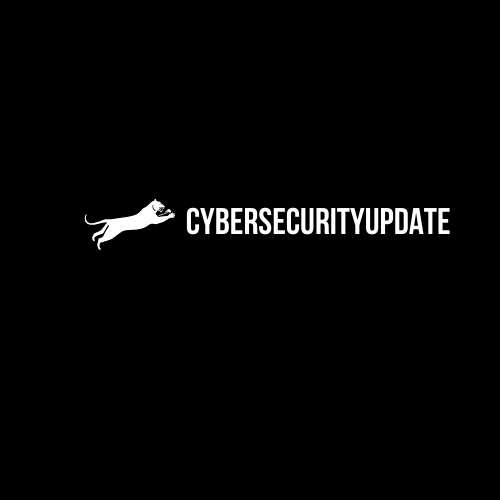Bruce Schneier imagines a future of AI hacks and concludes that AI will favor the defense
Category Archives: News
#RSAC: Cryptographers Panel Outlines Perils of Adversarial AI and Blockchain
Leaders of cryptography took to the RSA Conference keynote stage to debate AI and blockchain
#RSAC: Cybersecurity Industry Can Provide Soulful Jobs for Technologists Tired of Soulless Social Media Employers
The cybersecurity industry must capitalize, argued Bryan Palmer during his keynote talk at the RSA Conference
Virtru launches open-source project OpenTDF
Data protection provider Virtru is expanding its portfolio of encryption and privacy applications with the launch of its OpenTDF project, an open-source initiative to enable a universal standard for data control. By leveraging OpenTDF, developers can encrypt and protect sensitive data, and incorporate zero trust data control into their applications.
Virtru founder and CTO Will Ackerly’s first iteration of the project served as a function within in the U.S. National Security Agency (NSA), and it has also appeared as an open specification that the U.S. Office of the Director of National Intelligence (ODNI) hosted. Over time, the specification of TDF, or Trusted Data Format, has consistently informed efforts to facilitate sharing of sensitive data across disparate domains. Now, with OpenTDF’s launch, developers can access software development kits (SDKs), hosted in the OpenTDF GitHub repo, which simplifies how applications capable of governing sensitive data are built as it navigates through documents, video feeds, IoT sensors, and multi-party analytics.
Top 10 Malware April 2022
In April 2022, with the exception for both CryptoWall and RedLine returning to the Top 10, the lineup remained consistent with the previous month’s malware.
#RSAC: The Growing Relevance and Challenges of Privacy
Privacy is becoming a business issue, according to a panel of chief privacy officers at the RSA Conference 2022
Google Publishes Monthly Android Security Bulletin, Patches Critical Vulnerabilities
Google published its Android security bulletin for June on Monday, which includes details of over 40 vulnerabilities
Evil Corp Hacker Group Changes Ransomware Tactics to Evade US Sanctions
The Russian hacker group has shifted tactics and tools with an aim to continue profiting from its nefarious activity
KrebsOnSecurity in New Netflix Series on Cybercrime
Netflix has a new documentary series airing next week — “Web of Make Believe: Death, Lies & the Internet” — in which Yours Truly apparently has a decent amount of screen time. The debut episode explores the far-too-common harassment tactic of “swatting” — wherein fake bomb threats or hostage situations are phoned in to police as part of a scheme to trick them into visiting potentially deadly force on a target’s address.
Image: Netflix.com
The producers of the Netflix show said footage from an interview I sat for in early 2020 on swatting and other threats should appear in the first episode. They didn’t specify what additional topics the series would scrutinize, but Netflix’s teaser for the show suggests it concerns cybercrimes that result in deadly, real-world kinetic attacks.
“Conspiracy. Fraud. Violence. Murder,” reads the Netflix short description for the series. “What starts out virtual can get real all too quickly — and when the web is worldwide, so are the consequences.”
Our family has been victimized by multiple swatting attacks over the past decade. Our first swatting, in March 2013, resulted in Fairfax County, Va. police surrounding our home and forcing me into handcuffs at gunpoint. For an excruciating two minutes, I had multiple police officers pointing rifles, shotguns and pistols directly at me.
More recently, our family was subjected to swatting attacks by a neo-Nazi group that targeted journalists, judges and corporate executives. We’ve been fortunate that none of our swatting events ended in physical harm, and that our assailants have all faced justice.
But these dangerous hoaxes can quickly turn deadly: In March 2019, 26-year-old serial swatter Tyler Barriss was sentenced to 20 years in prison for making a phony emergency call to police in late 2017 that resulted in the shooting death of an innocent Kansas resident.
In 2021, an 18-year-old Tennessee man who helped set in motion a fraudulent distress call to police that led to the death of a 60-year-old grandfather in was sentenced to five years in prison.
The first season of the new documentary series will be available on Netflix starting June 15. See you on TV!
How the Colonial Pipeline attack has changed cybersecurity
It’s been just over a year since the American public got a taste of what a cyberattack could do to their way of life. A ransomware sortie on Colonial Pipeline forced its owners to shut down operations and leave half the country’s East Coast in a lurch for refined oil. Since that time, efforts have aimed at making the nation’s critical infrastructure more resilient and to counter the scourge of ransomware. The question is whether enough is being done fast enough.
“The attack on Colonial Pipeline was an eye-opener—not so much because of the risks about ransomware, but because of the threat landscape moving dangerously close to the critical infrastructure that underpins societies,” says Gartner Vice President, Analyst Katell Thielemann . “On that front, it was a wake-up call that spurred all kinds of activities, from cybersecurity sprints in the electric utility sector led by the Department of Energy to security directives from the TSA to pipeline, rail, and airport operators, to a new law establishing upcoming mandates for incident reporting.”
